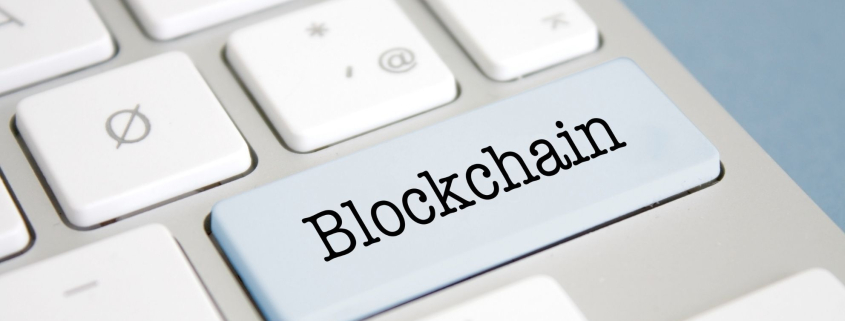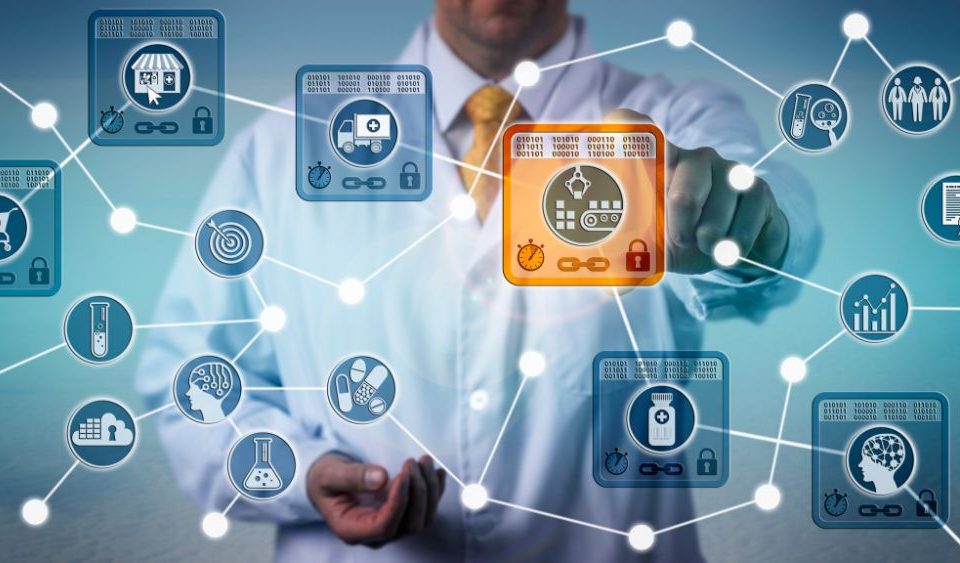Public sector innovation in the age of blockchains: is this our chance?

There can be little doubt we’re entering an era of unprecedented disruption. We’re witnessing how blockchain technology is transforming industries like healthcare, supply chain, energy production, manufacturing, banking, and many more. Yet, the usefulness of blockchain isn’t limited to the private sector. Government institutions and agencies have similar needs to collaborate, communicate, and work efficiently.
Blockchain is a distributed ledger technology (a decentralised database on a peer-to-peer network) that has the potential to transform the delivery of public services, protect public records, and simplify interactions with citizens. In mature economies, blockchain will deliver cost efficiencies. In emerging economies, it will shorten the maturation of public services. Blockchain has the potential to deliver security, efficiency, and speed to a wide range of public services.
In this article, we’ll define what blockchain is, what benefits it may bring, and how the technology has been applied to various use cases in governments around the world.
What is blockchain?
Think of blockchains as an efficient means of recording transactions. Traditionally, government agencies have recorded their transactions in ledgers, which they’ve kept safely locked away. Each agency keeps its own records and ensures that transactions are legitimate and accurate. Blockchains also record transactions in a ledger. The difference being blockchains have an inbuilt mechanism ensuring these transactions are legitimate and accurate.
Blockchain is a distributed ledger technology (DLT) that stores information across a network of peer-to-peer (P2P) servers or computers. Each computer (or node) in the network holds a copy of the same information as any other node in the network. Consensus is achieved on the network via a consensus mechanism that tells every node on the network that a transaction is valid. In much the same way that the internet opened up opportunities for communications, blockchain opens up opportunities for collaboration between government bodies, corporations, non-governmental entities, and private citizens.
Instead of several ledgers that are maintained independently, there is a single ledger of transactions shared (or replicated) across the entire network. You may have heard of blockchain being used in cryptocurrency transactions. In fact, blockchain works on any kind of network where there is an exchange of value. Each transaction is recorded inside a data structure known as a “block”.
Each block is assigned a unique hash key. Any tampering with the data within this block invalidates this hash key. Once the consensus mechanism verifies the data inside the block, the block is added to the blockchain. It is so called because every block is linked to the previous block via its unique hash key. Thus, a blockchain is a complete record of transactions. All parties on the network have access to complete and unaltered records of transactions. It is this inbuilt trust mechanism, without the involvement of a central authority, that makes blockchain technology so powerful. This trust mechanism works much like the democratic concepts of quorum and majority voting: the majority of nodes on the network agree on the legitimacy of transactions.
What are the benefits of blockchain for government agencies?
An important role of government is to keep records of organisations, individuals, assets, and activities. These include business licences, criminal records, property deeds, birth, death, marriage certificates, and other records. Individual government agencies keep their own records and ways of storing information. To further complicate matters, some records are also paper based. In these circumstances, it’s very difficult for agencies to share information or make changes as required.
Blockchain technology could significantly simplify the process of storing and managing public records. As we’ve seen, information is stored in blocks which cannot be altered once they’ve been confirmed. Plus, we’ve seen that blockchain has an inbuilt mechanism which ensures all information is accurate and legitimate. Since this information is easily shared between participants on the network, blockchain is the ideal solution to information overload in government agencies. Thus, agencies could speed up their digital transformation while also operating a secure infrastructure. Smart contracts could also enable these agencies to share information with outside agencies and organisations.
Blockchain promises many cost efficiencies to governments by reducing administrative burdens and the dependence on costly intermediaries. Three benefits of blockchain render the technology attractive to government institutions:
Decentralisation. Since all participants on a blockchain network share the responsibility of maintaining the ledger, there is no single point of failure. A full history of transactions is accessible to everyone on the network, and a full trail of asset ownership is available.
Immutability. Once the consensus mechanism confirms a transaction is authentic, it is time stamped and added to a block. Once this block is added to the blockchain, it cannot be altered. This creates an instant audit trail of all transactions occurring on a network.
Speed. Settlements of transactions on the blockchain occur almost instantly. Deed transfers, for example, take weeks. On the blockchain, the entire process could be reduced to a matter of minutes. And, as mentioned, smart contracts could automate the execution of contracts, further reducing intermediary fees.
It is not surprising, therefore, that governments around the world are seeking to leverage the speed, efficiency, and security advantages of the blockchain for their own citizens. Countries such as the United Kingdom, Brazil, China, and India are running pilots across a range of use cases.
In the next section, we’ll explore use cases of blockchain in government.
Use cases of blockchain in government
From procurement to certifications, fines, transfers, approvals, sales, and other activities, government agencies are swimming in data. When electronic databases replaced filing cabinets, the resulting efficiency gains precipitated a fall in costs. The internet promises to unlock even more value for government agencies by making this data more accessible and transparent.
Within this context of open data and services, a new generation of collaborative e-government services is under development. In the UK, for example, the Chief Scientific Adviser published a report detailing how blockchain technology could cut costs, increase productivity, combat fraud, and support compliance in public services.
Governments’ interests in blockchain may be regulatory, economic, or scientific. They may deploy blockchain applications to meet internal needs or deal more efficiently with citizens, corporations, or indeed other governments. The challenge for governments is to identify use cases where the value of deploying blockchain technologies is provable. Record keeping, value transfer, and smart contracts present broad use cases for governments.
Below, we have summarised some notable use cases of blockchain in governments around the world. We have also discussed other potential applications.
United States
The U.S. Health and Human Services (HHS) department developed its Accelerate blockchain-based application to manage contract billing for 100,000 contracts worth USD 25 billion yearly. The application was able to capture unstructured contract data across a range of some 50 systems through data replication. The application was extended to cover materials procurement for researchers. It may also be extended to cover clinical applications.
The Center for Surveillance Epidemiology and Laboratory Services is an agency of the Centers for Disease Control and Prevention (CDC). Its chief software architect built proofs-of-concept using blockchain technology to speed the monitoring of infectious diseases. The proofs were meant to improve the sharing of information between government agencies without the hindrance of privacy regulations. The CDC has also partnered with IBM on a blockchain solution to track the progress of the opioid crisis.
Asia
In the Philippines, only 42% of its citizens over the age of 15 have access to a bank account. The government approved an Ethereum-based solution for 80 rural banks to improve access to financial services.
In Malaysia, Melaka Straits City aims to use blockchain technology to track tourists, passengers, and luggage. Moreover, the city will issue its own digital currency, DMI coin. This will allow tourists to pay for services using their smartphones.
The South Korean city of Busan spent USD 3.5 million to build a blockchain-enabled virtual power plant. The power plant is based on a citizen-shared blockchain. The cloud-based plant aims to optimise power production by integrating the idle capacities of distributed energy resources.
Europe
In 2018, the UK, France, Germany, and 19 other European states signed the European Blockchain Partnership. It will identify opportunities for the cross-border delivery of public services. The EU called this agreement a “great opportunity for Europe and Member States to rethink their information systems…(It will) enable member states to work … with the European Commission to turn the enormous potential of blockchain technology into better services for citizens.” The partnership aims to invest EUR 300 million in blockchain supported projects.
Estonia has been dubbed “the most advanced digital society in the world”. The e-Estonia programme integrates healthcare, education, identity management, and other services. Estonia is the first country in the world to store healthcare data on the blockchain – 99% of healthcare data has been secured with the technology.
In collaboration with Learning Machine Technologies, Malta became the first country in the world to roll out Blockcerts, an open standard for blockchain-based certificates. Blockcerts allow participants to verify their educational credentials without the cost of recurring fees. Its compatibility with multiple blockchains gives governments the flexibility to use public, private, or permissioned networks. Several institutions have already issued blockcerts including the Institute for Tourism Studies (ITS), the Malta College for Arts, Sciences and Technology (MCAST), and the National Commission for Further and Higher Education (NCFHE).
Emerging markets
In Kenya, the Ministry of ICT set up a working group comprising startups, academics, corporates, and others. The group will explore opportunities for blockchain applications in the public sector. Some departments, such as the Ministry of Lands and the Ministry of Health, are already trialing the technology. The Kenyan government is keen to create fool-proof land records which are free from tampering preventing multiple sales.
In Peru, public procurement processes are rife with corruption. The government announced the development of a public procurement system based on blockchain in collaboration with Inter American Development Bank (IADB).
Identity management
Any transaction requires some form of verification of the identities of the parties involved. Without proper identity management, economic engagement and the delivery of public services are severely limited. Yet, the World Bank reports that one-fifth of the world’s population lives without an official identity. Blockchain technology could give public authorities secure control over identity elements within its population while giving citizens the power to choose what elements they wish to share. It would also enable an efficient transfer of value across asset classes.
Data protection
Citizens understand the need for their governments to access their data for the purposes of law enforcement, administration, and other duties. But they also expect their information to be stored securely. In 2015, for example, 22 million records on the Office of Personnel Management’s database in the U.S. were breached. These included social security numbers and names of friends and family.
Returning to the Republic of Estonia, the government has implemented a blockchain-based technology called Keyless Signature Infrastructure (KSI) to safeguard public records. The application stores hash values of records on a private blockchain. They do not store any other information about these records. Every time a file is modified, it is assigned a new hash value. This value cannot be altered once assigned and added to the blockchain. Thus, KSI provides government agencies with a complete, transparent audit trail of record alterations. Any unauthorised activity is quickly flagged. The government is planning to roll out the KSI technology to every public agency and private organisation in the country.
Voting
Voting has been a contentious issue for governments throughout the centuries. Either voters have not participated in elections, or the results have been hotly contested. Added to this are the costs of ballots, mailing, and other procedures. And there is often the perception that the process isn’t fair or transparent. Blockchain technology seems to be the natural solution to these problems. Potential solutions are working on blending identity management, anonymous voting, and ballot confirmations. Blockchain records are immutable and transparent. They promise to enable fair and democratic processes in future elections.
Final thoughts
Much has been said about the promise of blockchain in banking, finance, procurement, and other industries. Perhaps its biggest promise yet resides in the delivery of public services. Citizens around the world turn to their governments for wealth and security. In developed economies, blockchain promises to deliver process efficiencies while reducing costs. In emerging economies, it promises to leapfrog centuries of economic development to bring these economies to parity with the rest of the world.
Contacts:
+39 02 45391390
Follow Mangrovia Blockchain Solutions: LinkedIn | Twitter |




